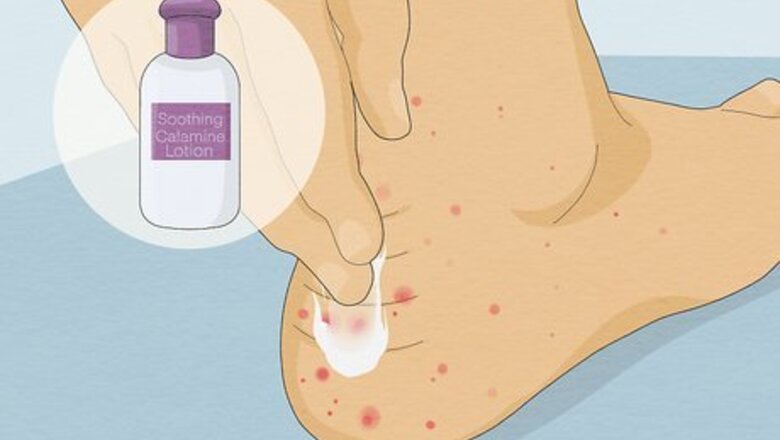
views
- Use OTC products, like hydrocortisone cream, aloe vera gel, and calamine lotion to relieve itching.
- Soak in a baking soda bath or an oatmeal bath for quick relief.
- Avoid scratching the bites as much as possible. Scratching can lead to open wounds, leaving you at-risk for infection.
- Visit your doctor if your symptoms worsen, since you may need antibiotics.
Home Care
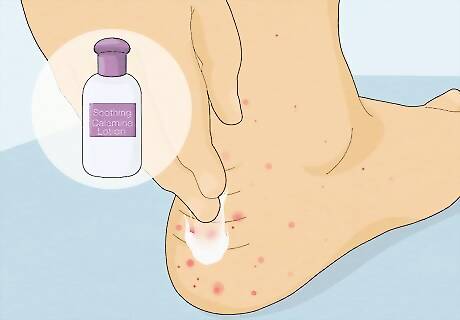
Apply calamine lotion to the bites. Calamine lotion soothes itching and helps calm irritated skin. Pick up a bottle of calamine lotion, then read all the instructions and apply a small amount to your bites. Keep using the lotion once a day until your bites heal. Do not use calamine lotion on your eyes, mouth, or genitals to avoid irritation. Talk with your doctor before using calamine lotion on children under the age of 6 months. Consult a physician before using the lotion while pregnant or breastfeeding.
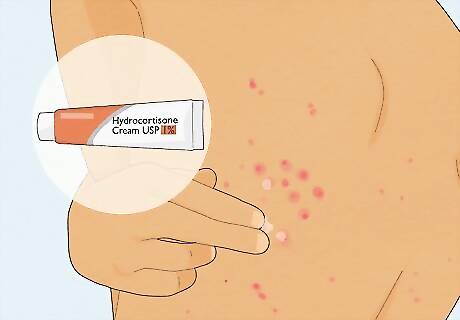
Try hydrocortisone cream to relieve itching. Hydrocortisone cream is another OTC medication that helps soothe irritated skin. Read the instructions on the package, then spread the cream over your flea bites. Keep using hydrocortisone cream once a day until your bites aren't itchy anymore. If you are pregnant or taking any other medications, speak with your doctor before using hydrocortisone cream.
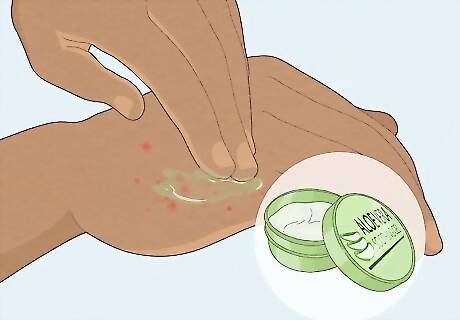
Put aloe on the bites. Aloe vera and aloe vera gel are great for soothing and promoting healing. Either buy aloe gel and spread it onto your bites, or use aloe from an aloe plant. Spread it over the irritated area 2 to 3 times per day to give yourself some relief.

Soak in baking soda and water to soothe your skin. Fill a bathtub with cool water, then add 4 to 5 tbsp (56 to 70 g) of baking soda. Soak your entire body in the water for 10 minutes at a time. Use a baking soda bath 1 to 3 times per day until your bites stop itching. Don’t want to soak in a bath? Mix 3 parts baking soda with 1 part water. Stir together until a paste is formed. Then, rub the paste onto the irritated skin. Leave the paste on your skin for about 30 minutes, and then wash it off with water.
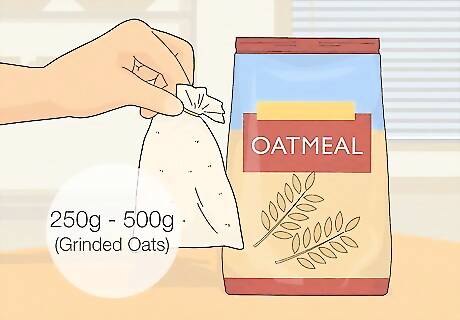
Take an oatmeal bath to relieve itching. Oatmeal contains antioxidants, which have soothing effects on the skin. In order to create an oatmeal bath, simply add 1 to 2 cups (250 g to 500 g) of uncooked oats to a tub of warm water. Soak in the tub for about 1 hour, or until your skin feels better. Don’t use hot water, as this can actually make your skin feel more irritated.
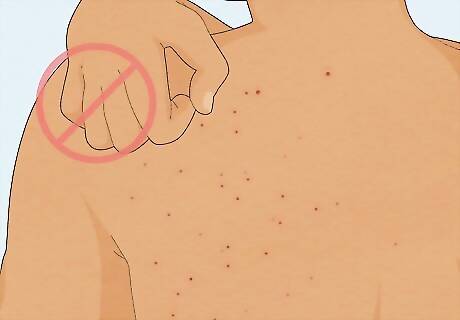
Try not to scratch at the bites. Sand flea bites are itchy, and it’s going to be very tempting to scratch them to get some relief. However, scratching too much can open up the bites, making you more susceptible to infection. Do your best to use home remedies to soothe the itching instead of scratching. When the itching gets intense, try tapping your skin gently with your fingernails. Tapping the skin may help relieve the itchiness without scratching.
When to See a Doctor
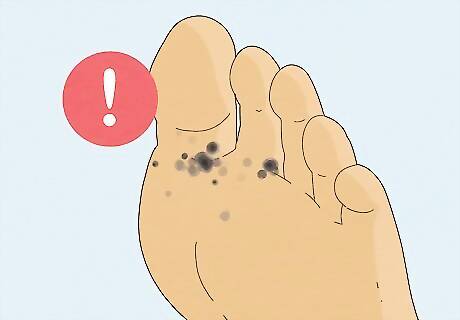
See your doctor if you spot breeding fleas under the skin. In most instances, sand flea bites will consist of a small red spot, similar to a mosquito bite. In some cases, however, a female flea will burrow into the skin to hatch eggs, which can lead to infection (called “tungiasis”). The bite will look like a swollen area with a small black spot in the center. Fortunately, a doctor can remove the burrowed flea quickly. To remove a burrowed flea, your doctor will likely numb the area and then use sterile forceps to get the flea out of your skin.

Visit your doctor if your symptoms worsen. After using home remedies, the itching and irritation should lessen. If this does not happen or if the symptoms worsen, visit your doctor immediately. This could mean that the bites have become infected or that you are allergic to flea saliva.
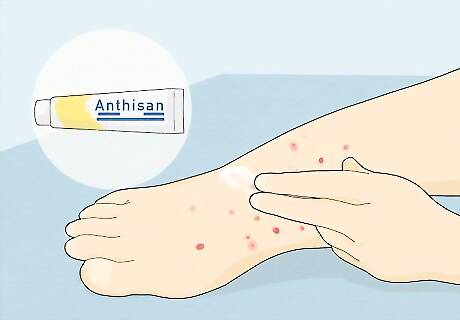
Treat bites with an antihistamine cream if your doctor prescribes it. If it turns out you are allergic to flea saliva, your doctor may give you a prescription cream. This will help soothe irritation and reduce your itching, as well as heal your bites. You may be allergic to sand flea bites if the bites get itchier and more irritated as days pass.
Preventing Sand Flea Bites
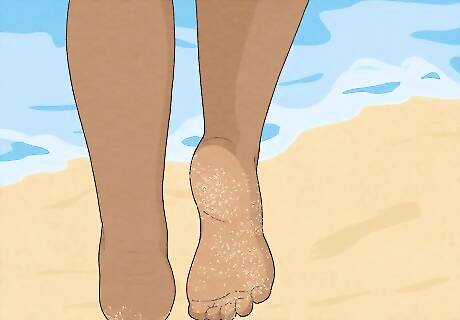
Avoid the beach at dawn and dusk. Sand fleas are most active at night when the temperature is cooler. To prevent sand flea bites, head to the beach in the middle of the day before the sun starts setting. You may still get a few bites, but there will not be as many fleas out during this time. Avoid the beach when it is raining. Sand fleas are most active in cool and moist temperatures.
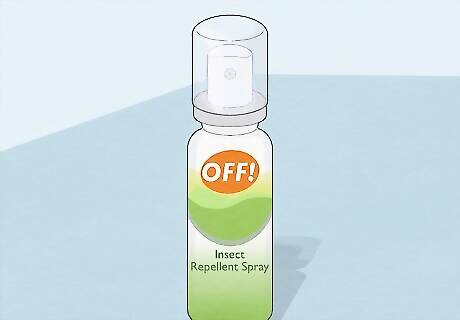
Apply insect repellent. Insect repellent deters most insects, including sand fleas. If you’re heading to the beach, spray insect repellent on your feet, ankles, and legs to keep fleas away. Or, make natural insect repellent with essential oils. Just keep in mind that it may not be as effective as repellent you buy from the store.
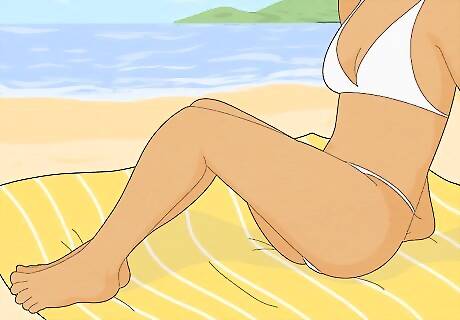
Cover your legs, feet, and ankles. Sand fleas can only jump 20 to 40 cm (8-16 inches), so it’s unlikely that you will get bitten anywhere above the waist. While walking along the beach, wear light pants and close-toed sandals. If you are lying down on the sand, make sure to sit on a towel or blanket. Combining coverage with insect repellent is the best way to prevent sand flea bites.




















Comments
0 comment